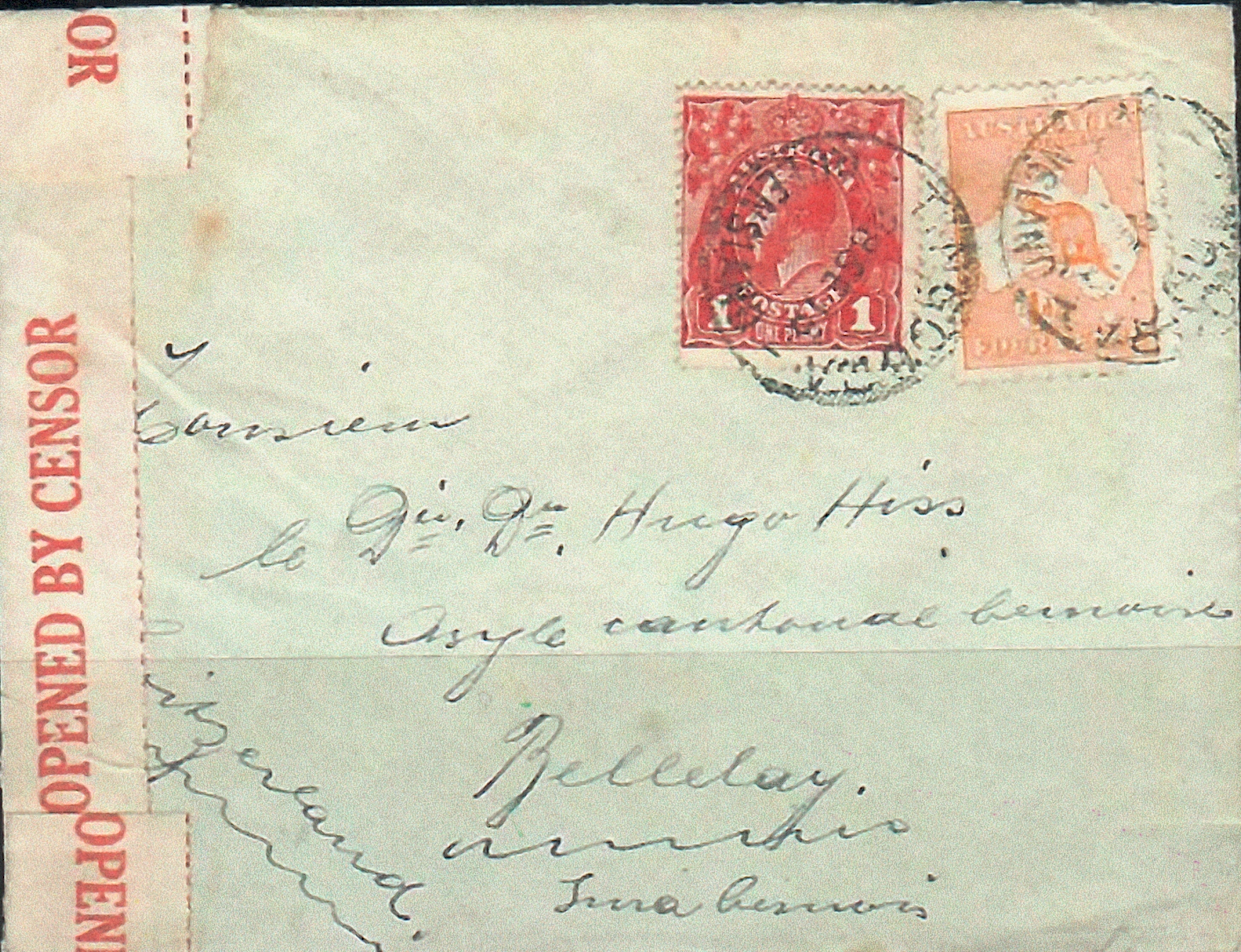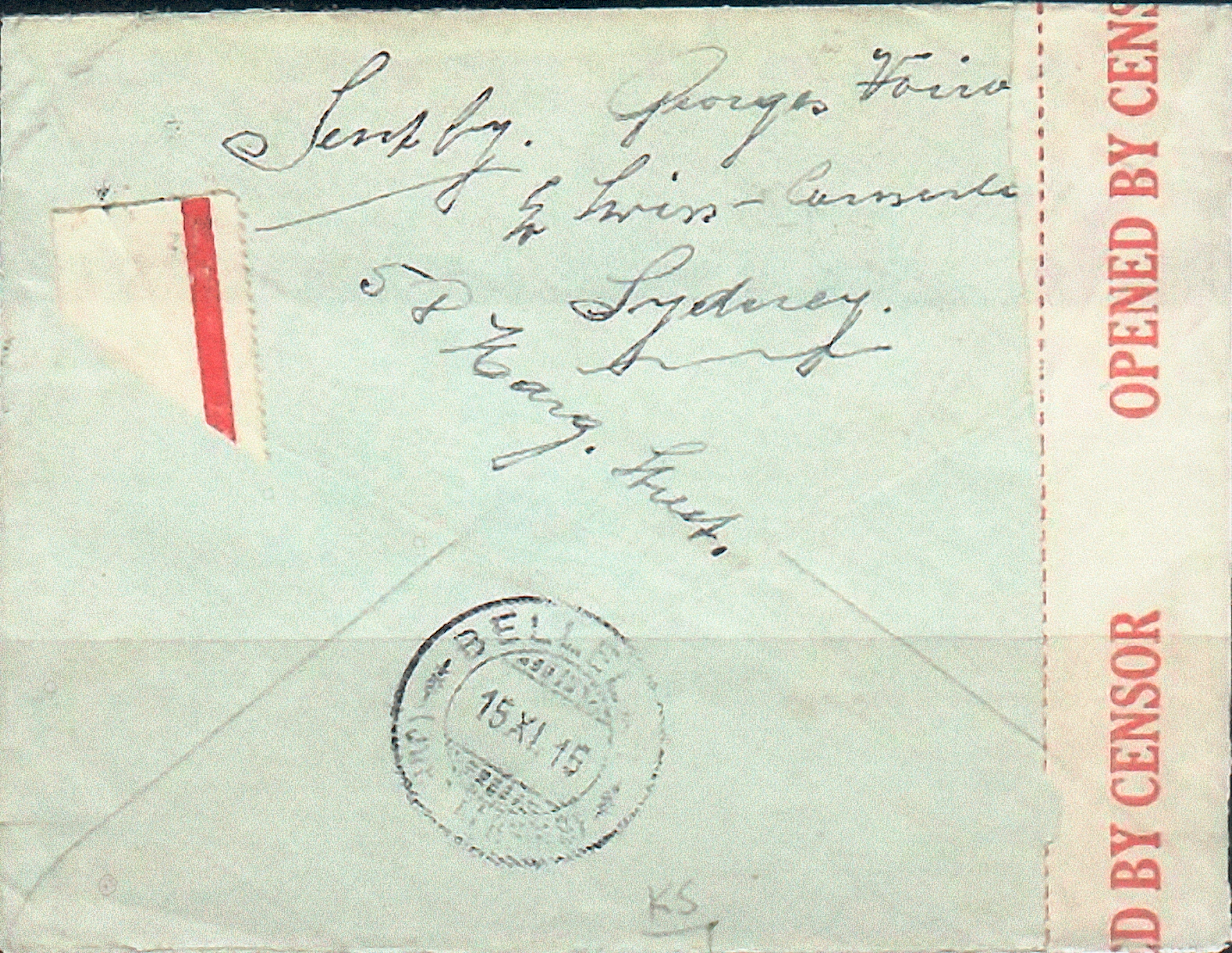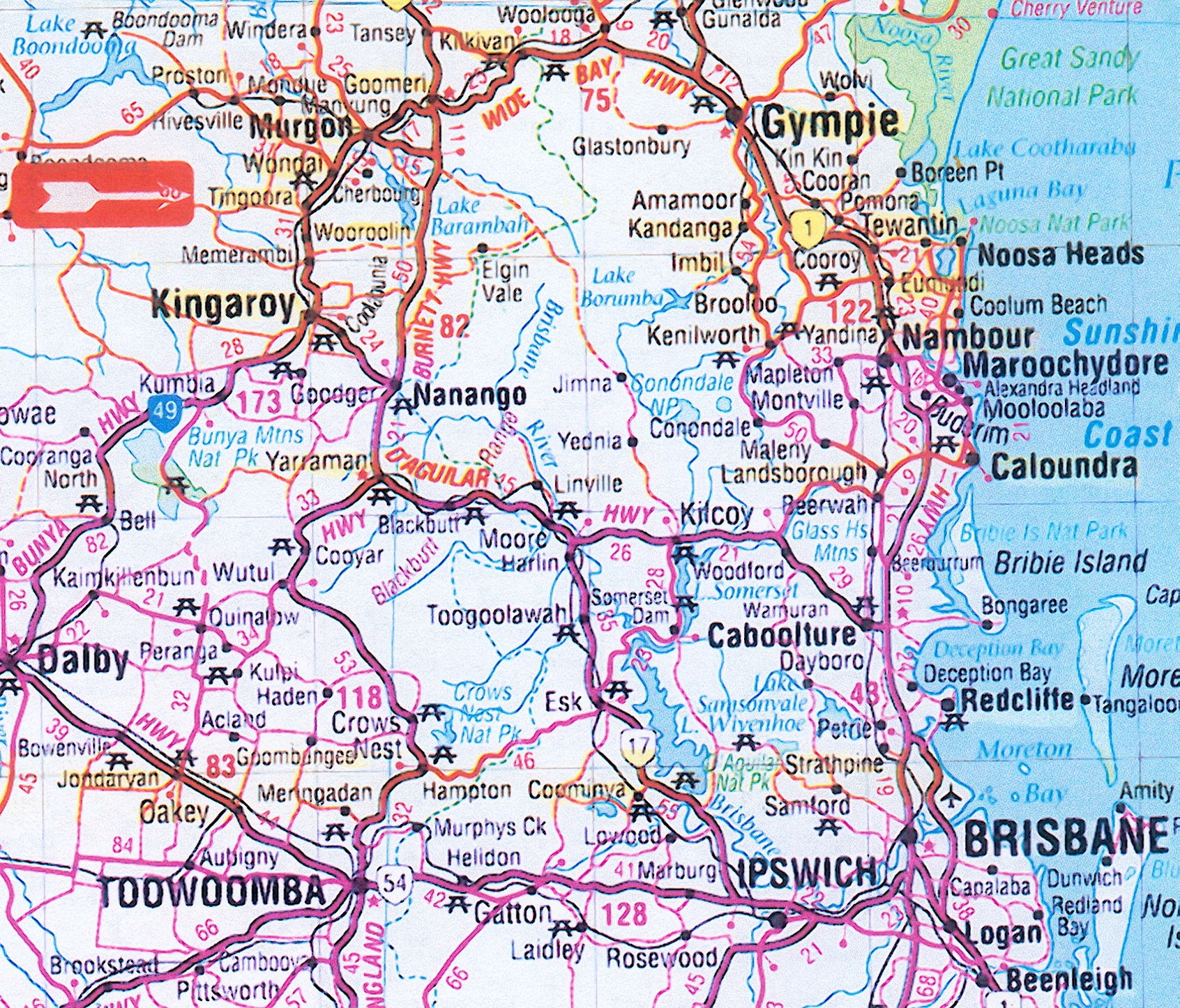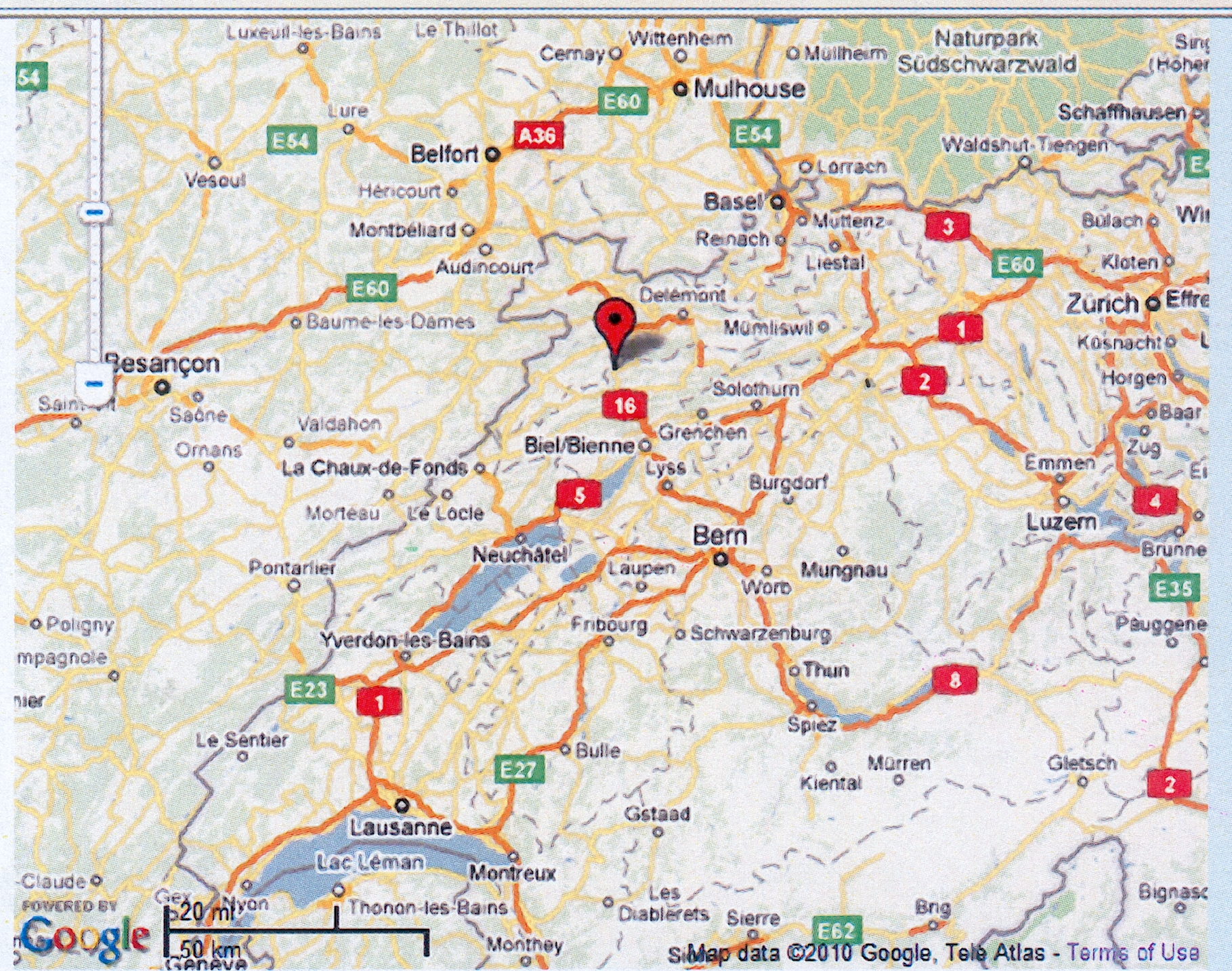The cover has a red 1d KGV head stamp and a 4d orange Kangaroo on the Map of Australia stamp which are canceled with TINGOORA/ 28 SE 15/ QUEENSLAND. The cover has a red OPENED BY CENSOR label and it is addressed to Monsieur le Dir. Dr. Hugo Hiss, Asile Cantonae Bernoise, Bellelay, Jura Bernoise, Switzerland (Figure 1).

The reverse has a ms. ‘Sent by Georges Voi—, Sr. Swiss Consul–, Sydney, 58 Marg(aret) Street’ and there is a reception postmark of BELLELAY/ 15 XI 15/ (SWITZERLAND) (Figure 2).

There were several interesting features for this cover which was subjected to censorship in spite of Switzerland being a neutral country in World War One. It presumably passed through the Intelligence Section of the General Staff, 1st Military District, located in Brisbane. The authorities had the power to intercept mail under the War Precautions Regulations of 1915 and the Aliens Restrictions Order of 1915. The addressed Dr. Hugo Hiss was the director of a psychiatric clinic in Bellelay (Asile: French; Asilo: Italian; Asyl: German). Both towns, Tingoora, Queensland and Bellelay,Switzerland had populations of less than 500 in 1915.
Tingoora is located south of Wondai on the Bunya Highway, and to-day the entire Wondai shire has a population of around 4,000, and the area is largely agricultural. In 1908 it boasted a number of buildings including a hotel and a general store. Tingoora’s position in Queensland is shown by the red arow in Figure 3.

Bellelay is at an altitude of 940 metres, situated in the Canton of Bern and is located ca. 30 k north-west of Basle close to the French border. Its recent population is 897, and in 1915 it was much less. It is known for Bellaley cheese (Tete de Moine, “monk’s head”) a rich semi-soft cheese, named after the monastery, Abbey of Bellelay, where it originated. A map of the area is shown and the red ‘bubble’ is Bellelay, and Bern as well as Basel are shown in Figure 4.

Research for Hugo Hiss described a Dr. Med. Hugo Hiss as the son of Karl Hiss (1831-95) and the German text mentioned “der Psychiatrischen Klinik” but little else of use. The father’s dates however made Hugo Hiss a good candidate for the recipient. I next accessed the email addresses of 50 psychiatrists and reduced the list to 15 practising within 100 k of Bellelay. After only 3 emails had been sent and within less than one hour I had a reply from Pierre Bovet MD, a Lausanne psychiatrist who did not know of Hugo Hiss, but he confirmed that there was and is a Psychiatric Clinic in Bellelay, and that such clinics were known as ‘asiles d’alienes’ at the time of WWI. He gave me the name of the present director of the clinic, Dr. Philippe Perenoud who confirmed that Dr. Hugo Hiss worked at the Bellelay clinic from 1899 until his death on 9 February, 1920 in Bellelay, and that he had been the clinic director from 1905. A picture of Dr. Hugo Hiss is seen in Figure 5.

The following information was supplied in French below the photo of Dr. Hugo Hiss, and what follows is my rendition of the information: “M. the director Hugo Hiss, 2nd doctor at Bellelay at the opening of the asylum and director since the 1st November 1905, died at Bellelay the 9 February 1920.
My fax, sent to the Swiss Consul General in Sydney, Roger Kull, did not help with the identity of the sender of the cover, for no records of the consular staff were held in Sydney in 1915. He gave me the email address for the National Archives in Bern in an attempt to identify Georges Voi— , but my request was never acknowledged. Dr. Pierre Bovet came to my assistance again with the following email: “You may try to take a bet, that this guy’s name was ‘Voirol’. Voirol is a rather common name in the region of Jura, where Bellelay is located. The Registrar General in Switzerland keeps records of Swiss Citizens depending on village of origin.” I was later able to confirm the name of the sender was Georges Voirol.
What was a senior Swiss Consular official doing in the small place like Tingoora in 1915? Was he writing on behalf of a Swiss national to the medical director of the psychiatric clinic concerning a relative who was a patient? Why did he travel to a small town more than 800k (as the crow flies) from Sydney to post the letter?
This paper was published in the NSW Philatelist, Volume 24, November 2002, Pages 13-15 under the title of ‘Strange Origin, Strange Destination’ which was not of my choosing, for this intriguing paper.